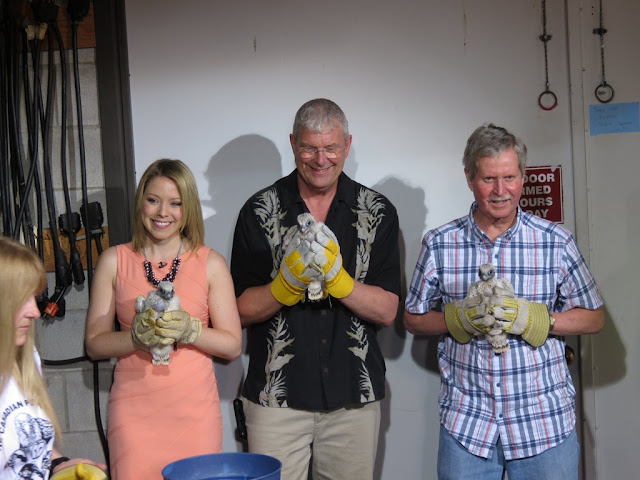St. Jacobs, ON
29 May 2015
John Pries, a long-standing member of Waterloo Region Nature, and his wife, Susan are the proprietors of River Song Banquet Hall on Hawkesville Road.
The property is situated on five acres of diverse natural habitat along the Conestogo River where John, a dedicated naturalist, is fortunate to have what amounts to his own little nature preserve. Some of the views along the river are quite lovely.
During our visit we purchased coffee and delicious baked goods from Susan and took them down to the river's edge where we could observe nature in all its spring glory to our heart's content.
Both Midland Painted Turtles Chremys picta marginata and Snapping Turtles Chelydra serpentina are residents in the creek and John monitors their nesting activity in the spring, and goes to great lengths to protect a percentage of their nests from various predators who are keenly aware of the turtles laying, and are anxious to feed on the rich source of protein the eggs provide.
John is diligent about not safeguarding all of the eggs and permits some nests to be vulnerable to predation as nature befits.
The protected nests above contain eggs just laid by painted turtles and this anthropogenic intervention will assure that at least some young will ultimately make it to the water to embark on their precarious path to adulthood.
Very kindly, John removed the cover from a clutch of eggs he had protected just the previous night and carefully cleared away the soil so that we could observe an egg.
The egg was then very carefully put back in the same orientation before it was removed, and all of the soil replaced on top of it.
As might be expected the creeks are home to numerous species of reptiles and amphibians and we had many excellent views of Bullfrog Rana catesbeiana .
This American Toad Bufo americanus stayed clear of the water and tried to hide itself in the grass.
Bracket fungi abounded and this configuration seemed particularly interesting.
An Eastern Phoebe Sayornis phoebe was sitting on its nest, but the location did not lend itself to great pictures.
However, we did see this adult bird with a caterpillar in its bill; perhaps there are already young in the nest and hungry mouths to feed.
Just before arriving at the banquet hall we snapped this Eastern Kingbird Tyrannus tyrannus on a fence and I include the picture here to show two members of the large tyrant flycatcher family together.
A colony of American Cliff Swallows Petrochelidon pyrrhonota are in residence on the bridge crossing the river and the whole place was buzzing with commotion and activity.
We spent a very pleasant hour and a half or so and saw many other species not covered here. If you are planning to be in the area be sure to give John a call. I have no doubt that he would be willing to show you the treasures of his property and share his fine knowledge of the natural world. And I guarantee you a mouth-watering delight if you splurge on some of Susan's fine baking.


































































.svg.webp)













